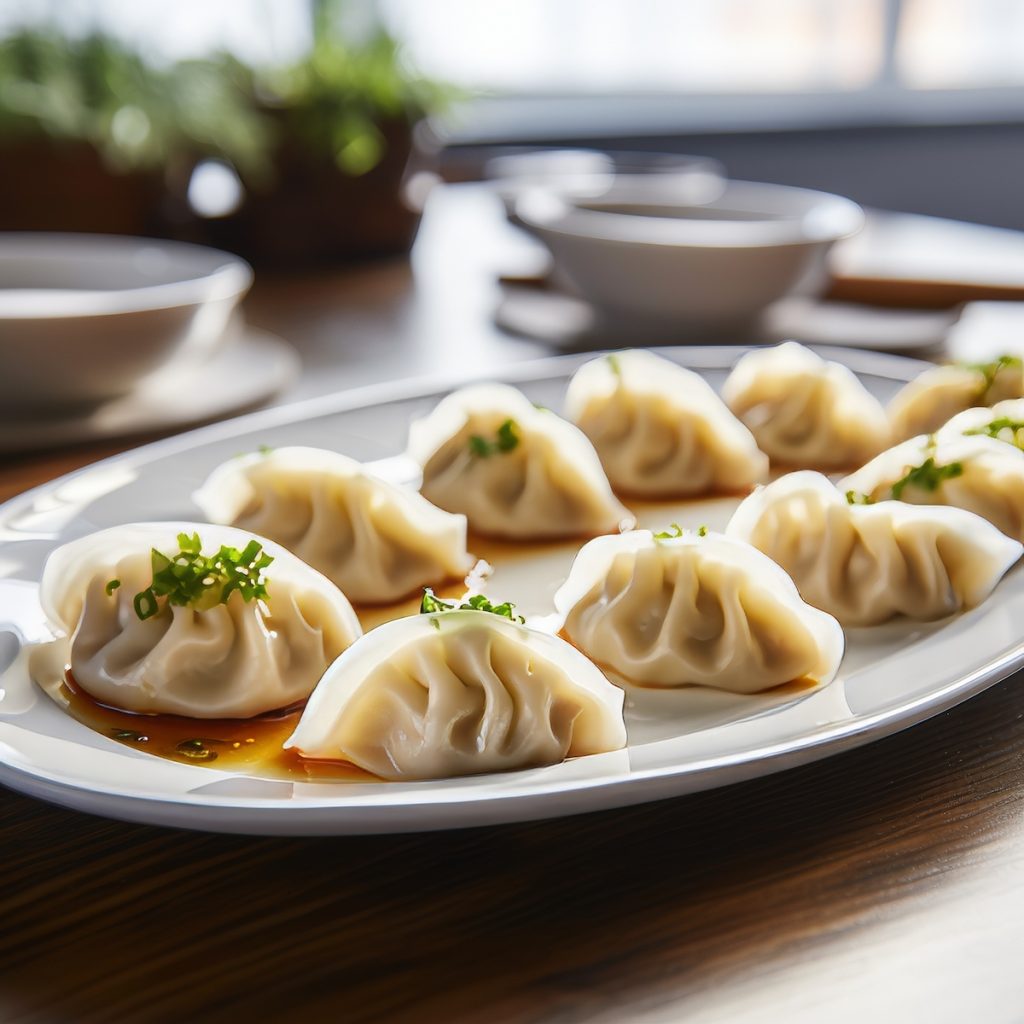Learn How to Make the Best Chinese Dumplings
Chinese dumplings are a beloved dish with a rich history. They consist of a thin dough wrapper filled with various ingredients, like ground meat, vegetables, or seafood.
Dumplings can be steamed, boiled, or pan-fried, offering different textures and flavors. They’re always a crowd favorite, whether as a snack, appetizer, or main course.
To make Chinese dumplings, start by preparing the filling. Ground pork, beef, or chicken are common choices, mixed with chopped vegetables like cabbage or mushrooms. Season the filling with soy sauce, ginger, garlic, and other spices. Once the filling is ready, take a dumpling wrapper, spoon a small amount of filling in the center, and fold the wrapper to seal the edges. Use water to help the edges stick together.
Next, choose your cooking method. To steam, place the dumplings in a bamboo steamer lined with parchment paper and cook for about 10 minutes. For boiling, add the dumplings to a pot of boiling water and cook until they float to the top. For pan-frying, heat oil in a skillet and cook the dumplings until the bottoms are crispy, then add water and cover to steam them through.
Dumplings are versatile, easy to make, and perfect for any occasion.
Boiling Fresh Dumplings
Cooking dumplings is similar to cooking fresh pasta, with a few key differences. First, use plenty of water for both. Start by bringing a large pot of water to a boil. Once it’s boiling, add the dumplings and stir immediately to prevent them from sticking together.
Let the water come back to a boil. As soon as the dumplings float to the top, add 1/2 cup of cold water. This step helps the dough cook properly without falling apart, while giving the filling time to finish cooking.
Continue cooking until the dumplings float again. At this point, taste one to check if it’s done. If not, add another 1/2 cup of cold water and wait for them to float once more.
Once cooked, use a Chinese strainer or slotted spoon to remove the dumplings from the water. Be careful not to stack them on top of each other, or they may stick together and break.
Boiling Frozen Dumplings
Don’t thaw frozen homemade dumplings. Just add them directly to a pot of boiling water. Once they start floating, add 1 cup of cold water to slow them down. Bring the water back to a boil. Add another cup of cold water as soon as the dumplings float again.
When they float a second time, they should be done. Taste one to check. If it’s not done, add more cold water and wait for them to float again. Once they’re ready, strain and serve with your favorite dumpling sauce.
Pan-Frying Dumplings
Pan-fried dumplings are called pot stickers. Why? Because they stick to the bottom of the pan, crisping up as they cook. You can’t pan-fry frozen dumplings—be sure to defrost them first to avoid burning.
Heat a tablespoon of corn or vegetable oil in a large nonstick pan. Add the dumplings in a single layer, without overcrowding. Here’s the fun part: Add 1/2 cup of cold water over the dumplings, cover, and cook on low heat for 10 minutes. Don’t flip or check them during this time.
Let the water cook off. The dumplings should be golden and crisp on the bottom. If not, continue cooking until they are. Once done, remove and serve, or start another batch.








6 Responses
Excellent article. Perfectly presented cooking instructions. Even a person with “two left hands” who is able to reed will do it! Well done.
Thank you for presenting this info. Ive seen srudent from China do it the same way and had no idea why the cold water.. Now I do thanks to you.
What about steaming the dumplings?
Hi Hallie, steaming is a very common way to prepare dumplings and one of my favorite techniques. This post was more about what I learned from reading Suzanna Foo’s cookbook about how she prepares them but I see I need to write a new post about steaming them.
In the old days there is no way to adjust the flame so when the water reaches the boiling temperature the only way to prevent it from overwhelming the wok is to cool it down by adding small amount of cold water. Three times? Because that’s how long it usually takes to have the dumpling well cooked.
Nowadays we can adjust the flame, be it gas or electric stove, what you do then when the water reaches boiling point? Adjust the flame to the point where it boils but won’t overwhelm.
Oh the old guys don’t like this because they’ve been solving the problem by adding cold water, what they do then? They find all sorts of reasons, last like: it tastes better, it’s Chinese culture/tradition…or as this author was told, it has to do with the ingredients…
Haha, enjoy your dumplings, be full but not be fooled.
Thanks James for these interesting points about cooking dumplings. I never knew that about gas stoves. We had an electric stove growing up and you could adjust it for low, medium and high but you had very little control like you do with a gas stove.